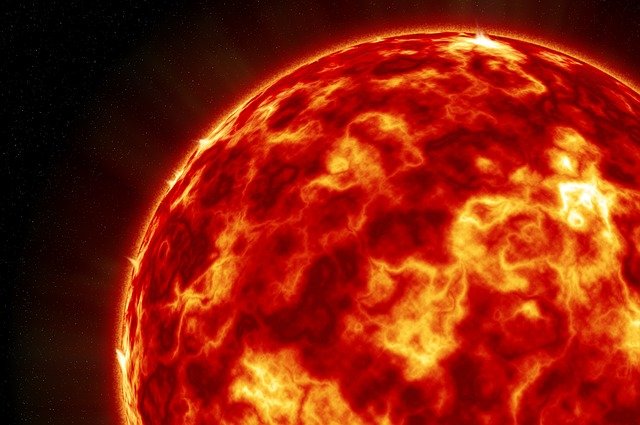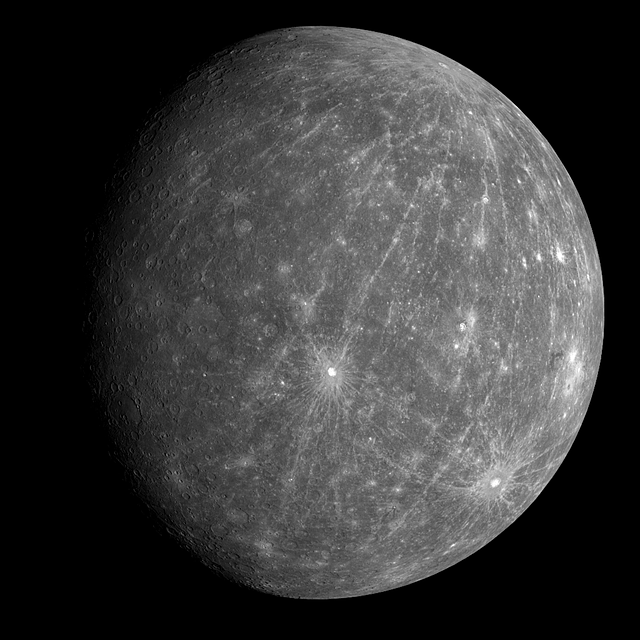*This post may contain affiliate links. This means we may make a commission if you purchase an item using one of our links*
The main differences between the Sun and Mercury is that the Sun is a yellow dwarf star, that is the brightest entity in our solar system, has the most mass, is the largest entity in our solar system and it is the entity within our local region that provides energy to the planets around us whereas Mercury is the closest terrestrial planet to the Sun that is locked in an circular orbit around it.
For a more thorough breakdown of the differences between the Sun and Mercury, continue reading as I will be discussing it in more detail below.
What Is The Sun?
Table of Contents

The Sun is the bright, celestial entity at the center of our solar system and is also a star that falls under the G type main sequence star bracket (also called a yellow dwarfs), all of which are medium sized stars that tend to be around 0.84 – 1.15 solar masses.
Our Sun is 1 solar mass, making it a medium sized medium star. It’s also on the brighter side for a yellow dwarf, the color that it emits is white as opposed to the slightly yellow that less luminous yellow dwarfs would be.
Of course we still see the Sun as yellow or even red on Earth but, the reason for this significant color shift is because our atmosphere scatters and breaks up the photons that reach us, ultimately changing the true color of the light rays from white to the yellow, orange or red we see in our day to day.
As it is a star, the Sun will actively convert the hydrogen elements at its core into helium, through a process called nuclear fusion.
Nuclear fusion is the reason why it generates light and produces the energy we receive, helping us power machinery, technology, grow crops so on and so forth.
The process of nuclear fusion also affects how hot our star burns, allowing the sun to hit temperatures around 6000°C on a daily basis. This will be the case for another 4.5 – 5 billion years until it’s unable to convert hydrogen into helium.
Once hydrogen cannot be converted, an imbalance between the inward and outward forces keeping the Sun together will occur, causing an imbalance which would result in our Sun bloating up many many times its current size.
When this happens it will enter its red giant phase, where it’ll be around 256 times larger than it is now.
This phase will last for around a billion years until it sheds it mass through a process called planetary nebula, leaving behind only a dead white dwarf remnant.
What Is The Planet Mercury?

Mercury is the planet closest to our Sun and would fall under the terrestrial planet moniker. Out of the 8 main line planets Mercury is also the smallest, coming in at 4,879km.
This planet is known for having its fair share of craters, which is mostly down to its thinner non protective atmosphere that is unable to stop interstellar debris from striking its surface.
Despite its close proximity to the Sun, Mercury is not the hottest planet in our solar system but, it does come in second, just behind Venus. It’s surface temperature is around 430 degrees on the upper end with the average temperature around 167 degrees Celsius whereas its core is far hotter at around 1,600 – 3,000 degrees Celsius.
Due to it close proximity to our local star, Mercury is unable to sustain a moon around its orbit and even has a very unique rotation around the Sun where it has 3:2 orbital resonance with the Sun.
As for how long it takes for the planet to rotate around our yellow dwarf star, its the shortest time period of 88 days for obvious reasons, whilst a single day on the planet takes 58.65 Earth days to complete. Its axial tilt is only 2 degrees to the right, making it amongst the straightest planets in the solar system too.
Similarities Between The Sun And Mercury
Mercury and the Sun don’t have too much in common but there are the odd few similarities. These would include the following:
- Both are spherical in shape.
- Both have a hotter core.
- Both are part of the same solar system
Differences Between The Sun And Mercury
As for the differences between the two, they include the below:
- Mercury has nothing orbiting it whereas the Sun has all of our entire solar system orbiting it.
- Mercury is dark gray whilst the Sun is a bright white color.
- Mercury is significantly smaller than the Sun with a diameter of 4,879km compared to the 1.39 million km of the Sun.
- The Sun is far heavier with a mass 2×10³⁰ kg which is equal to 1 solar mass whilst Mercury is only 3.285 × 10^23 kg.
- The Sun can create its own energy through nuclear fusion whereas Mercury cannot create its own energy.
- Mercury is far cooler than the Sun where it has temperature of 167 degrees Celsius on average whereas the Sun averages 6,000 degrees Celsius.
- The cores for each celestial object is hotter still with Mercury having a temperature between 1,600 – 3,000 degrees whilst the Sun’s core is 15 million degrees Celsius.
- The Sun has a far stronger gravitational and magnetic field than Mercury.
Summary
Although both entities are within the same solar system, they do still fall under completely different celestial object brackets. After all one is a yellow dwarf star and the other a terrestrial planet.
Whether it be their size differences, temperature, color and overall role within the solar system, where one is the supplier of all energy and the other simply an orbiter. In short, despite their close proximity, the Sun and Mercury are far from the same which as is outlined above.


